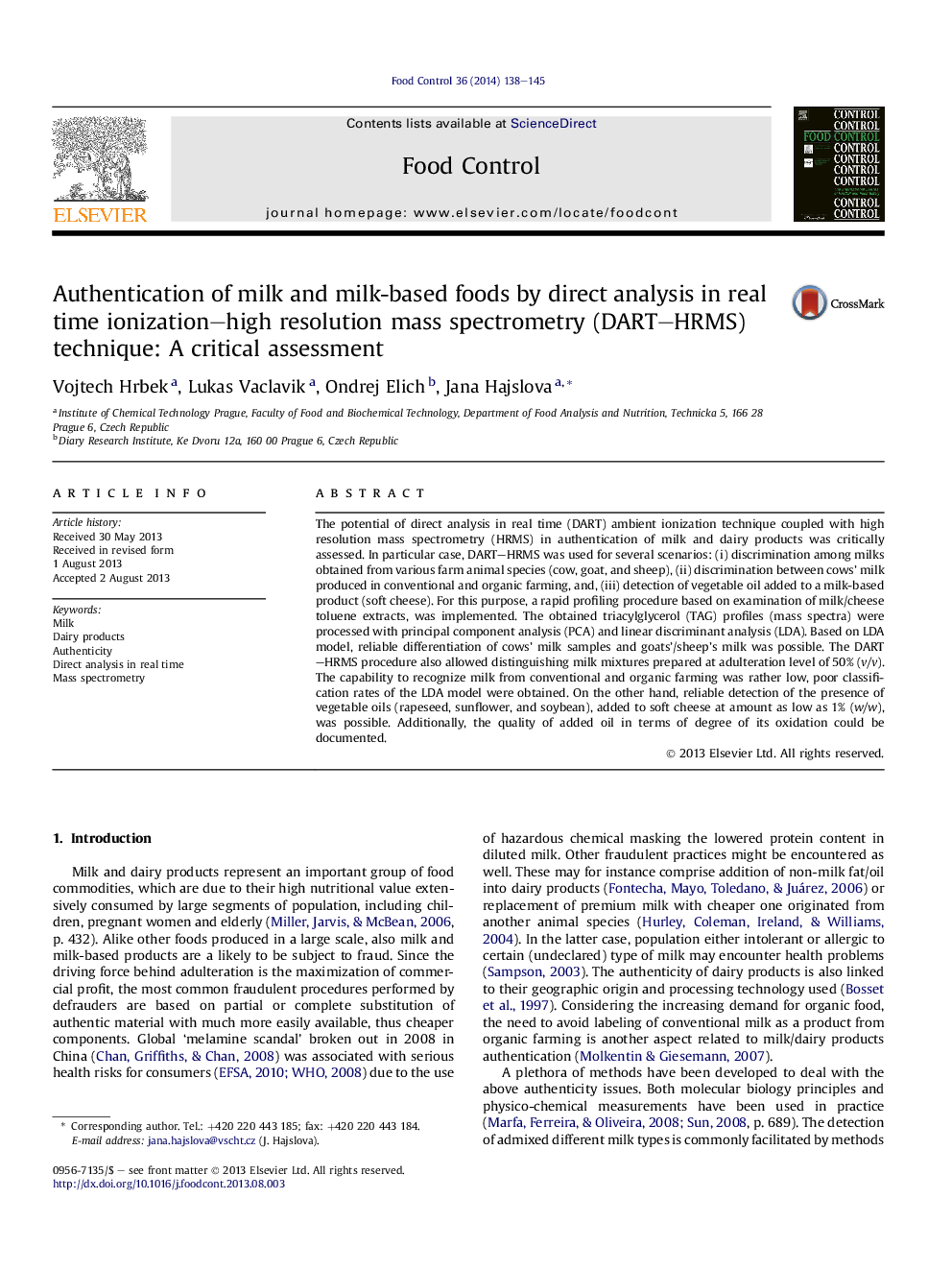| Article ID | Journal | Published Year | Pages | File Type |
|---|---|---|---|---|
| 6392118 | Food Control | 2014 | 8 Pages |
â¢The use of DART-HRMS in authentication of milk and dairy products was tested.â¢Procedure was based on rapid profiling of lipid fraction of samples.â¢Method enabled detection of vegetable oils in soft cheese samples at 1% (w/w).â¢The method's ability to reveal adulteration related to species and farming was low.
The potential of direct analysis in real time (DART) ambient ionization technique coupled with high resolution mass spectrometry (HRMS) in authentication of milk and dairy products was critically assessed. In particular case, DART-HRMS was used for several scenarios: (i) discrimination among milks obtained from various farm animal species (cow, goat, and sheep), (ii) discrimination between cows' milk produced in conventional and organic farming, and, (iii) detection of vegetable oil added to a milk-based product (soft cheese). For this purpose, a rapid profiling procedure based on examination of milk/cheese toluene extracts, was implemented. The obtained triacylglycerol (TAG) profiles (mass spectra) were processed with principal component analysis (PCA) and linear discriminant analysis (LDA). Based on LDA model, reliable differentiation of cows' milk samples and goats'/sheep's milk was possible. The DART-HRMS procedure also allowed distinguishing milk mixtures prepared at adulteration level of 50% (v/v). The capability to recognize milk from conventional and organic farming was rather low, poor classification rates of the LDA model were obtained. On the other hand, reliable detection of the presence of vegetable oils (rapeseed, sunflower, and soybean), added to soft cheese at amount as low as 1% (w/w), was possible. Additionally, the quality of added oil in terms of degree of its oxidation could be documented.
